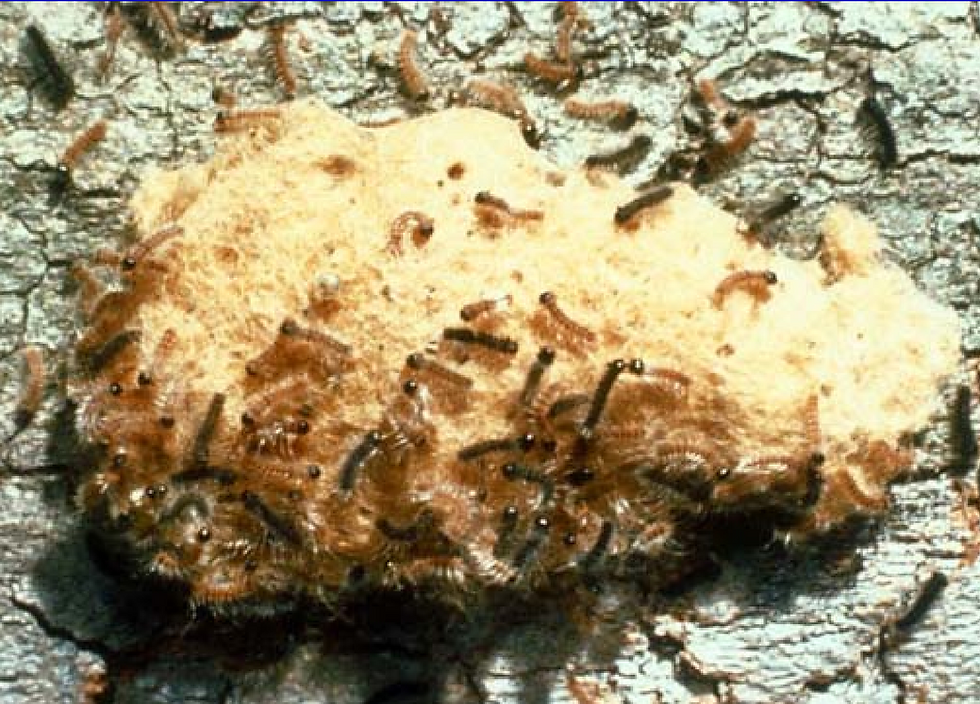Act Now to Reduce a Gypsy Moth Infestation in Your Trees
- kathrynrygg
- Feb 17, 2023
- 2 min read
Updated: Nov 4, 2025
by Ruth Marchetti
As the warm spring weather arrives, those of us who struggled with infestations of gypsy moth caterpillars last summer have to work quickly to avoid last year’s mess and tree damage. The invasive gypsy moth is now a permanent presence in New York State, with fluctuating populations mainly dependent on weather conditions, food sources and natural predators. Successful management should mean minimizing tree damage without disrupting predator populations or causing further damage to our already-threatened beneficial insect populations.
Our neighbors across Lake Ontario are also struggling with outbreaks. An entomologist from the University of Guelph argues that Gypsy moths are best controlled by letting nature take its course.
Most of us, however, will want to make some effort to protect our trees. Homeowners can scrape off and destroy egg cases until about mid-April, but many are out of reach or hidden under decks and other structures. Using Btk, a naturally-occurring bacterium that targets the gypsy moth caterpillar in the spring when the caterpillars are first coming out can significantly bring down the caterpillar population, but widespread use may harm other caterpillars and reduce food supplies for birds and other insect-eating animals. Although individuals can purchase BtK, treating a tree should best be handled by an tree expert. Find a listing of arborists here.
In addition, using physical barriers (duct tape bands covered with Vaseline or Tanglefoot in the spring and burlap skirts in the summer) also helps reduce the number of caterpillars. Cornell Cooperative Extension provides links to articles that detail making physical barriers. Later in the summer when the moths begin to hatch, pheromone traps can lure the male moths before they’re able to fertilize the flightless females, further reducing egg populations.
This homeowner will choose a hybrid approach, having some smaller trees professionally sprayed with BtK, banding and scraping larger trees and putting out traps later in the summer.
More resources from New York DEC:
Click on the link to read Ruth's Plague of Caterpillars blog article from last July to learn more about the physical barriers you can create on your trees. This was the most popular article we've published to date!









Comments